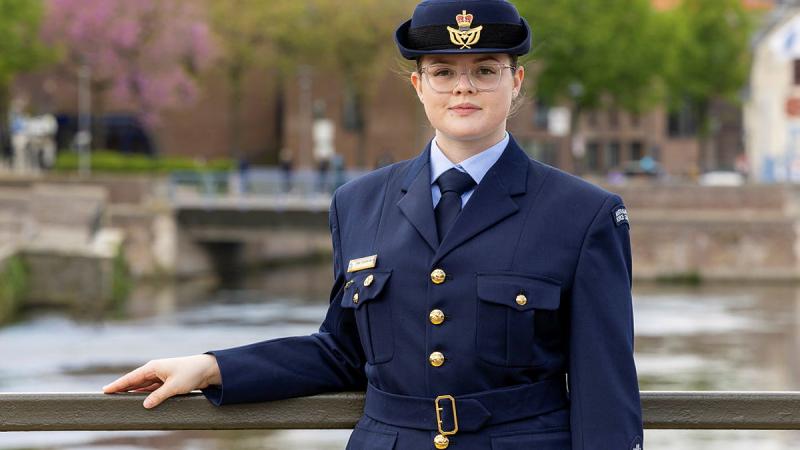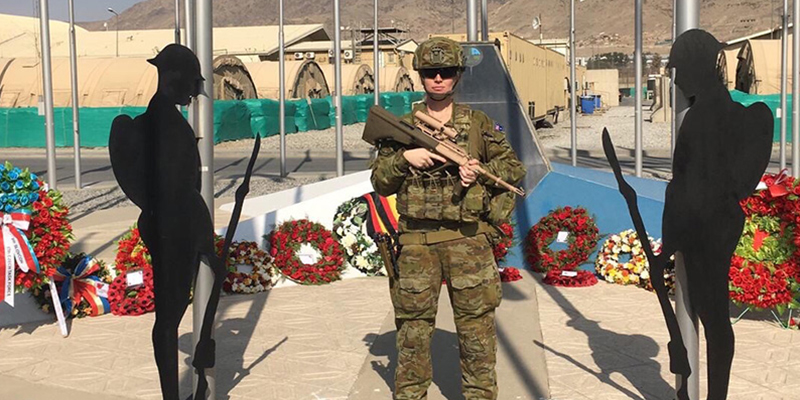The latest static display at Bonegilla Migrant Experience features the remarkable life of Galina Karciauskas, 88, who has an unbelievable story of survival.
The recently installed ‘life station’ has gone up just in time for this weekend’s Discover Bonegilla reunion on November 2 and 3.
At 14 years old, Galina was the youngest of more than 800 ‘displaced persons’ who arrived as the first group of migrants to enter Bonegilla Migrant Reception Centre in December 1947.
Youthful and attractive, Galina, along with her older ‘sister’ Irina, exemplified what the local newspapers would soon refer to as ‘beautiful Balts’.
Although her identity papers marked her as Latvian, in reality, she was Russian-born Galina Vidritskaya, who in late 1941 had fled German forces at the siege of Leningrad (Saint Petersburg) with her parents and younger sisters.
Within a year, the whole family was imprisoned by the Nazis in the Salaspils “Police Prison and Re-Education Through Labor Camp” – an unofficial concentration camp near Riga in Latvia. The camp was especially severe in its treatment of children.
Galina survived, but was separated from her family.
Believing Galina’s parents to be dead, a monastery teacher from Riga, Irina Vasins, helped arrange for her own parents to ‘adopt’ Galina with forged identity papers.
In 1944, 27-year-old Irina and 11-year-old Galina became ‘sisters’, forming a life-long bond.
The Vasins family now fled Riga ahead of the arriving Soviet army, finding refuge in a Displaced Persons Camp in American-occupied Germany.
From here, Irina and Galina applied to migrate to Australia.
At Bonegilla Migrant Reception Centre, Galina experienced extremely basic living conditions, although after her experiences in Europe, she found no reason to complain.
The sisters were soon employed at Bonegilla, and filled their spare time partly by making themselves fashionable clothing.
People noticed how Irina mothered Galina, and there were strong suspicions that Galina was really Irina’s illegitimate daughter.
After almost two years, Galina’s adoptive parents Alexei and Maria Vasins migrated to Melbourne, and Irina and Galina went to live with them.
Galina soon married Lithuanian migrant Vytas Karciauskas, with whom she had six children.
For years, Galina’s children knew nothing of her life before coming to Australia.
It was as if her ‘real life’ had started at Bonegilla.
Only when Russia opened up to the West in the early 1990s was Galina able to reunite with her three sisters, after more than 40 years of separation.
And with this reunion, Galina’s life before Bonegilla fully came to light.
Galina’s daughter Rebekah Brook, who lives on the Border, said her mother had only fond memories of her time spent at Bonegilla.
“She spoke a lot about Bonegilla but never about her life before then,” she said.
“She loved her time at Bonegilla, I mean the weather was cold and the food was different but she appreciated it and had no complaints.”
Rebekah recalls her mother talking about swimming in the weir and there always seemed to be a dance on.
“Mum and dad met at a dance and had their first child within a year of meeting,” she said.
Rebekah plans to take her mum and siblings out to see the life station in the near future.
“Mum’s proud of it and I guess it’s bittersweet because her ‘sister’, Irina, isn’t able to share in it because she passed away several years ago and it’s the sort of thing Irina would have loved,” she said.






